Worried About Milwaukee Public Museum
It’s a great institution. But will it still be great — or shrunken — after it moves?
I am worried about the Milwaukee Public Museum.
I’m worried because with minimal public input the decision was made that the current museum is no longer viable. This worries me for a couple of reasons. The first is the current museum belongs to us, the residents of Milwaukee County. This is our building, and it seems like we’ve had no meaningful say over its future. The second reason this worries me is the current museum is not without merit. It was designed very thoughtfully, particularly the layouts of the second and third floors. They were designed to meander, and even, to a certain extent, disorient. Even longtime visitors can find themselves forgetting what collection is waiting for them just around the bend. It is filled with nooks and crannies that provide a sense of delight that is frankly lacking in modern museums, which seem designed to lead the visitor by the nose through large, open halls, where there isn’t the possibility for random discovery.
But maybe it is necessary for the museum to move, because I am also worried about the museum’s collections, which have not been adequately stored or cared for due to decades of deferred maintenance (our fault, or perhaps more charitably, the result of the county’s absurdly constrained revenue structure). It breaks my heart to see buckets in front of the Ainu exhibit and in the Japanese tea garden, almost as much as it breaks my heart to think about water slowly destroying artifacts like our unique collection of WPA textiles. The museum is also no stranger to moves; the current building on Wells Street is its fourth home. It is arguable that the museum improved with each move, expanding in size and scope and level of sophistication. And yet, I am worried that this new move may be the end of this trend.
How can we be on the precipice of casting aside these public treasures with no meaningful public discussion? How have we permitted ourselves to be essentially locked out of these momentous decisions? How can it be that this transformation has been framed as an inevitability, rather than a proposal? It’s not just what might be lost that worries me, it is also what might be excluded. Most of the discussion around the new museum has focused on downsizing and refocusing the collection. This worries me immensely, because I believe that if you asked any resident who has visited the museum about what makes them remember it so fondly, you would find that its scope and diversity is its strength. It is the heart of the thing. It is what makes it a beloved institution. I have never once heard a visitor to the museum complain about being able to walk from The Streets of Old Milwaukee to a Costa Rican Rainforest with a pitstop at Hell Creek during the Cretaceous period in between.
MPM is Wisconsin’s Museum. Nothing else in the state compares. So why, with this once-in-a-generation opportunity, would we opt to bring less of the world to Wisconsin? Very few of us will get to travel to Africa and India and the depths of the ocean. The museum is the closest many of us will get. It is wrong to deprive future generations of the opportunities we’ve taken for granted for almost six decades. Why should we even consider limiting our scope and ambition? When the Art Museum built its iconic addition, did it shirk its collection? Did it display less for the public? When Discovery World moved to its new location, did it limit its vision? In both cases the answer is a resounding “NO!” Why should our Museum be any different?
The Milwaukee Public Museum is ours in every meaningful sense. The collections are ours, the dioramas and displays are ours, and its legacy as a scientific institution is ours. What happens to our Museum should be in our hands. If we truly value the Museum with the depth of feeling that I believe so many of us do, then we can do better. We can preserve our local scientific and artistic heritage. We can keep the scope of the museum broad and engaging, and we can dare to reach even further, and bring the same ambition that has defined the institution since 1882.
So I am beseeching you, as fellow citizens and museum patrons, do not sit idly by. Make your opinions known. Write to the administration of MPM Inc., write to your local state representative and County Supervisor. Make noise. This museum belongs to us, so let’s make our desires known.”
Conceptual Designs For a New Museum
More about the New Natural History Museum
- Public Museum Would Be Demolished For Major Development - Graham Kilmer - Dec 3rd, 2025
- MPM Announces Closing Date for Current Museum - Graham Kilmer - Nov 18th, 2025
- See Inside New $240 Million Museum - Graham Kilmer - Aug 29th, 2025
- Exterior Facade Goes Up On New Museum - Graham Kilmer - Aug 19th, 2025
- New MPM Facility Drops a Beam While Celebrating New Milestone - Graham Kilmer - Jul 16th, 2025
- Friday Photos: The Nature & Culture Museum Rises - Jeramey Jannene - May 9th, 2025
- Milwaukee Public Museum Changes Its Name - Graham Kilmer - May 6th, 2025
- New Museum Exterior Being Built in Germantown - Graham Kilmer - Apr 4th, 2025
- Public Museum Begins Building New Exhibits - Graham Kilmer - Mar 18th, 2025
- Public Museum Raises $105 Million Private Donations for New Home - Graham Kilmer - Feb 7th, 2025
Read more about New Natural History Museum here
Op-Ed
-
Wisconsin Candidates Decry Money in Politics, Plan to Raise Tons of It
 Dec 15th, 2025 by Ruth Conniff
Dec 15th, 2025 by Ruth Conniff
-
Trump Left Contraceptives to Rot; Women Pay the Price
 Dec 8th, 2025 by Dr. Shefaali Sharma
Dec 8th, 2025 by Dr. Shefaali Sharma
-
Why the Common Council’s Amended Budget is Good Policy for Milwaukee
 Nov 20th, 2025 by Alds. Marina Dimitrijevic and Russell W. Stamper, II
Nov 20th, 2025 by Alds. Marina Dimitrijevic and Russell W. Stamper, II


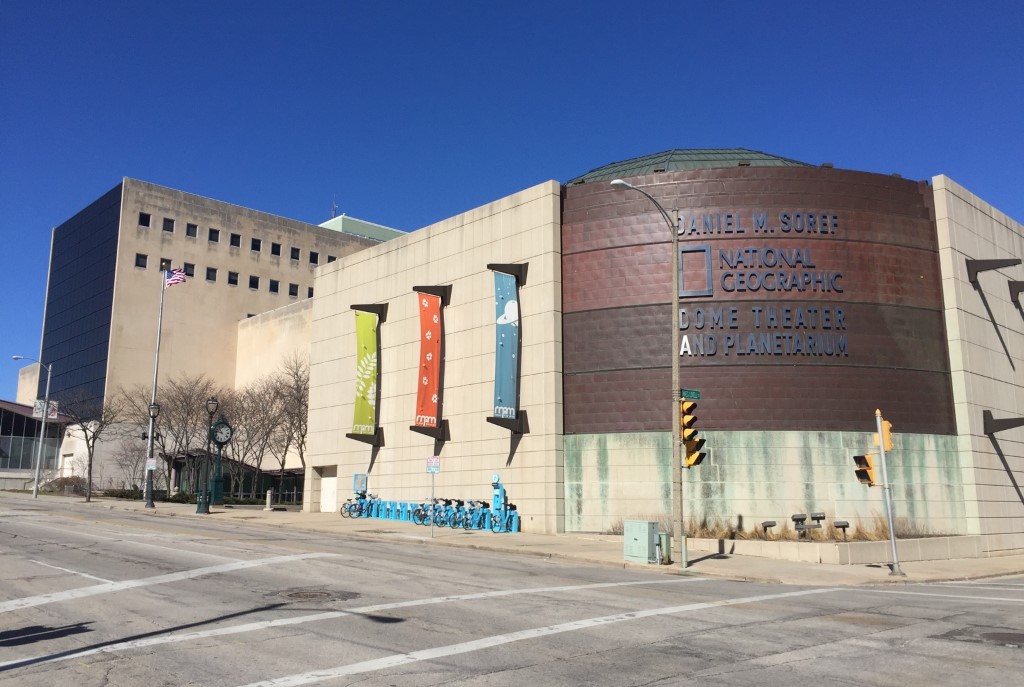
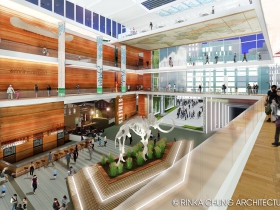
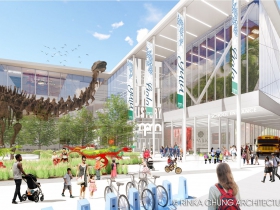
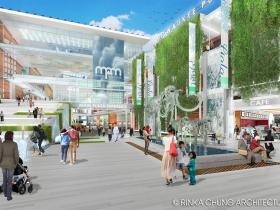
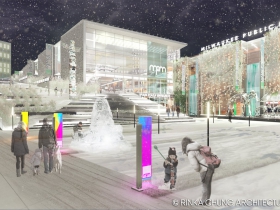
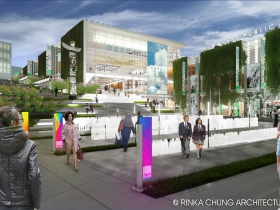
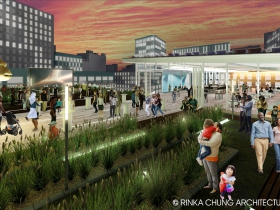
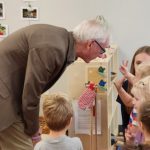
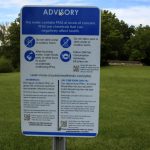

















Thank you! I am also worried. I am worried that the current trend of exhibit technology will replace rather than enhance the existing displays. MPM is old, but beloved. It’s murals and dioramas are treasures, historical and artistic, that probably could not be replicated today without great expense. They should not be discarded.
I would urge you and everyone else who feels that way to reach out to MPM Inc. and the County Board of Supervisors. Like I said, these are our exhibits and if we don’t want to see them irretrievably lost them we need to make those preferences known. Nothing is set in stone, nothing is inevitable. All we have a some conceptual drawings, no location, and what I believe is the false assertion that a new facility is the only way to avoid accreditation and financial disaster.
The first habitat diorama created for a museum was constructed by taxidermist Carl Akeley for the Milwaukee Public Museum in 1889,[21] where it is still held. Akeley set taxidermy muskrats in a three-dimensional re-creation of their wetland habitat with a realistic painted background. With the support of curator Frank M. Chapman, Akeley designed the popular habitat dioramas featured at the American Museum of Natural History. Wikipedia.
(Hat tip to my father who mentioned this some 60 years ago).
I appreciate (and share!) how much you care for the museum. We love many of the same things about MPM and its collections. I am concerned, though, that your perspective is rooted in the same combination of fear, risk aversion, and pessimism that holds Milwaukee back in so many ways.
As you pointed out, the current building is destroying the core of what the museum is — its collections. Repairing this building makes zero financial sense, which means a new building is, in fact, an inevitability — the rain isn’t going to stop, and neither are the leaks! None of this is news, and the conversation about what should come next has not been occurring in secret. We’re now a couple of years into an ongoing public dialogue about options for the museum. If we’re to build a new facility, it is our obligation to future museum users to consider current best practices, and how the best museums around the world are designed and operated.
Our focus, and the focus of decision-makers directly involved in the process, should be to get extremely clear on the mission of the museum, and then design a building and programming that achieves that mission in the best possible way. Rather than preserving old experiences for future generations, putting too much focus on ‘fan service’ could produce a result that is irrelevant and outdated far sooner than what we should expect from such an important public investment.
While you are right to point out that the dioramas are important works of local art and history in their own right, several of them are scientifically and historically inaccurate, and some are even flat-out racist. We SHOULD be asking the best way to pay homage to these pieces and perhaps give them some form of second life, whether in the future museum or elsewhere. But to insist they remain a central part of the museum’s collection no matter what is like insisting a science textbook keep a 1970s chapter on some disproven theory because students of the era really enjoyed learning the content at the time.
I see a lot of similar themes in the discourse about the Mitchell Park Domes. As you point out regarding MPM, the Domes are only the most recent of several iterations of a public institution focused on horticulture in Mitchell Park. The Domes, like their prior incarnations, are now at the end of their useful life. What we should be preserving and carrying forward is the legacy of the ting: a cutting-edge, public horticultural institution in Mitchell Park.
With both the Domes and the Museum, if we get hung up on one specific version of their respective legacies, we at best risk wasting money and missing an opportunity to reinvigorate great public amenities; at worst, we do exactly what you fear: end the thread of how they’ve been reincarnated to continue exciting and educating future generations.
The rain never stops, but leaks can be mended. More to the point, the same solution that is being proposed for the new museum could easy be done for the current one: move the collection off site. It is only the maniacal focus on moving that has stopped this from happening.
Moreover, you say we need to focus on best practices and what the best museums are doing. That is a highly subjective statement. You also say that we run the risk of becoming outdated. I would argue new technology is the thing that rapidly becomes outdated, and I would point to the museum’s attendance as proof positive that that is simply not happening. More to the point, you are completely ignoring the very real advantage that building off of the current exhibits affords us. The Streets of Old Milwaukee are an excellent example of this. It would never have turned out as good as it did if we were starting from scratch.
Finally, no one is saying that the museum must remain preserved in amber. That is a red herring. Exhibits do need to be updated, and that is what money should be going towards, not glass atriums and fewer exhibits.
And that is not the worst that can happen. The worst is we look back with regret over how casually we threw away our legacy for a glorified Apple Store. That we butchered the work of artists and scientists and wound up with one of dozens of interchangeable museums that could be anywhere.
I’ll also say this: the reactions this article has been getting tell me the process has been far from public and inclusive.
It also strikes me as odd that museums like the Field or the Museum of Natural History seem quite content to maintain their displays and their buildings, yet for some reason that is simply not viable here. These surely rate as world-class institutions. It seems the only difference is they put in the effort to update and maintain their exhibits. There’s no need to dynamite the whole thing because an exhibit needs to updated.
My background is museum education; however I have never worked at MPM, only admired the museum’s long history, amazing exhibits and dedicated staff and volunteers.
The museum has experienced challenges for decades thanks to Milwaukee County lack of maintenance to all their holdings from parks to museums. As I see it we can only solve these deferred maintenance issues IF we as taxpayers are willing to have a dedicated tax. If we do not do this the current building will continue to leak and destroy the exhibits and collections.
I want to debunk a previous entry here stating MPM has not been asking the public what they want. There have been many forums asking people about their vision of the future for MPM and their collections. Whatever happens we need to have a public museum For the 21st century with science and education in the forefront.